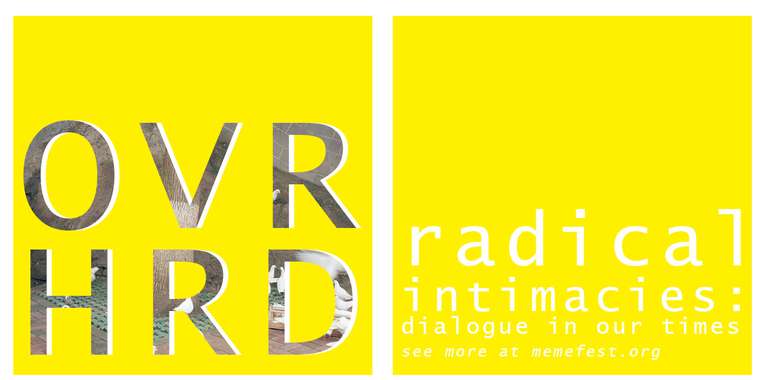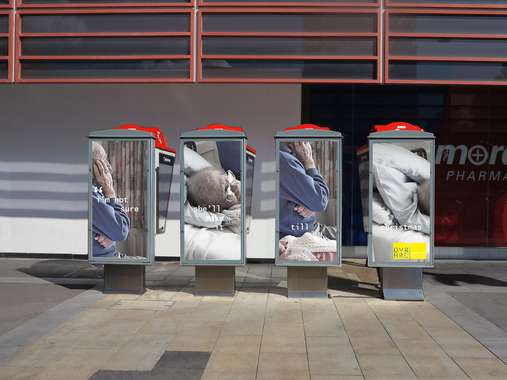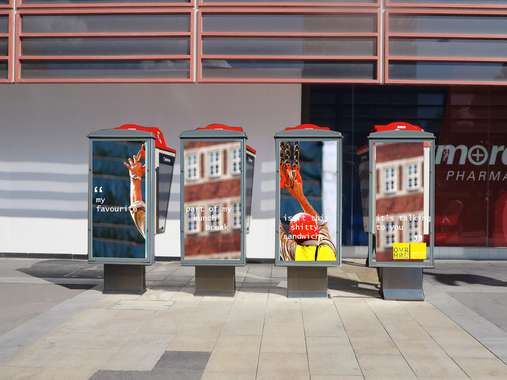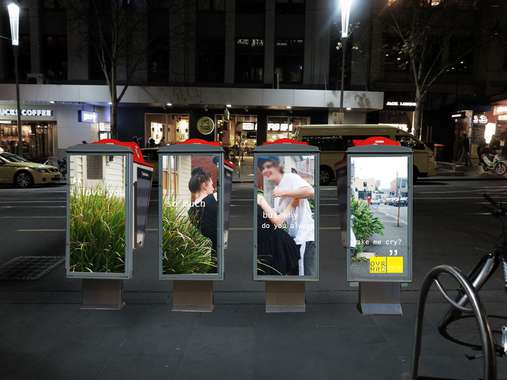OVRHRD
by baobei
This work has not been commented by curators.
Title
OVRHRD
Headline
Radical Intimacies: Dialogue In Our Times
Concept author(s)
Amy Liu
Concept author year(s) of birth
1994
Concept author(s) contribution
The conceptual idea, but the public is who made the most valuable contribution to the work.
Concept author(s) Country
Australia
Friendly Competition
Radical intimacies: dialogue in our times (2014)
Competition category
Visual communication practice
Competition subcategory
static
Competition field
academic
Competition subfield
student
Subfield description
Swinburne University of Technology
Check out the Radical intimacies: dialogue in our times 2014 outlines of Memefest Friendly competition.
Description of idea
Describe your idea and concept of your work in relation to the festival outlines:
I wanted to illustrate the interwoven complexities of our trivial, banal, every day dialogue that guides the landscapes of our communities. The presence of these sorts of dialogue is overwhelming, but the quality is changing. What I took from the brief was that dialogue, an instrumental organ of human interaction, is now being forged in more absurd and abstract ways. People are quantifying their worth with the amount of ‘likes’ they receive, instead of cultivating intimacy and conversating with fleshy human beings.
I wanted to re-humanise people. I wanted to find the dialogue that invokes the emotions that kind of tickle you the wrong way, or makes you miss someone you loved – like a flirtatious glance or a sympathetic nod.
So I used the payphone as the media vehicle, and used quotations of those users as the advertising message. Public payphones are a fixture of our communal landscapes, hollering to a bygone era of communication. Even in our post-smartphone era, these endangered fixtures are still instruments in creating dialogue in our times. Almost every public space is adorned with advertising messages, including the humble public payphone. The public streets they adorn are sites of communication for its inhabitants, not corporate control.
So came the conception of “OVRHRD – Radical intimacies: dialogue in our times”. I felt like my campaign owed it to Memefest and it was fitting.
What kind of communication approach do you use?
Inspired by the guerrilla advertising initiatives by underground street artists, I wanted to take a similar approach of taking over a public space. In a painstakingly boring act of seeking honest, valuable content – the quotations you see in each installation are real. I eavesdropped on conversations being had at these payphones and took notes. The activity didn’t yield the most enlightening material as fast as I thought it would, but it didn’t matter: it was honest. I wanted to take a raw, literal approach. Also bear in mind I'm a business student, not a design student.
What are in your opinion concrete benefits to the society because of your communication?
The intention of the campaign is not to create a quantifiable benefit to society, especially not on my opinion alone. The benefit of the campaign, for me, is the fleeting moment that a passerby will experience its message. It’s not a wildly radical campaign. It’s subtle, it’s understated, it’s inoffensive. It just hopes to create those moments that are fleeting and random but still contain powerful emotional nutrients that can alleviate the symptoms of our failing dialogue.
What did you personally learn from creating your submitted work?
The human condition is what makes us so unique. I always forget that we are all capable of the most blessed and the worst of qualities.
Why is your work, GOOD communication WORK?
It encompasses humans of all walks of life and puts the message in their hands.
Where and how do you intent do implement your work?
At the moment, it is totally plausible to implement it in the public sphere of the city of Melbourne. Given the opportunity, I would make it a bigger project than it is but due to time constraints that's not possible.
I would love to see the reactions.
Did your intervention had an effect on other Media. If yes, describe the effect? (Has other media reported on it- how? Were you able to change other media with your work- how?)
In stripping the current advertising messages from the payphones, the campaign takes over the public space for independent use, instead of corporate control.








